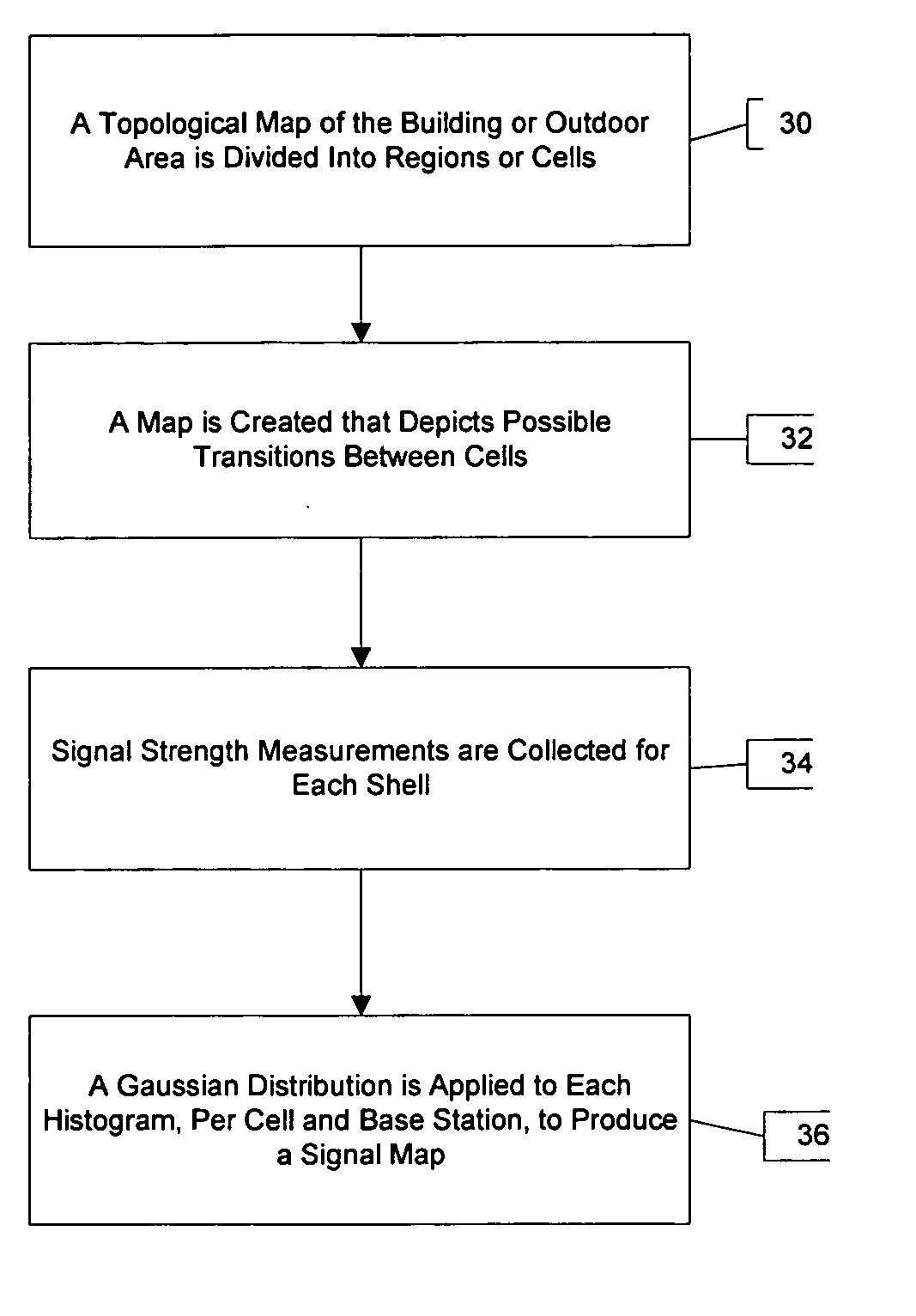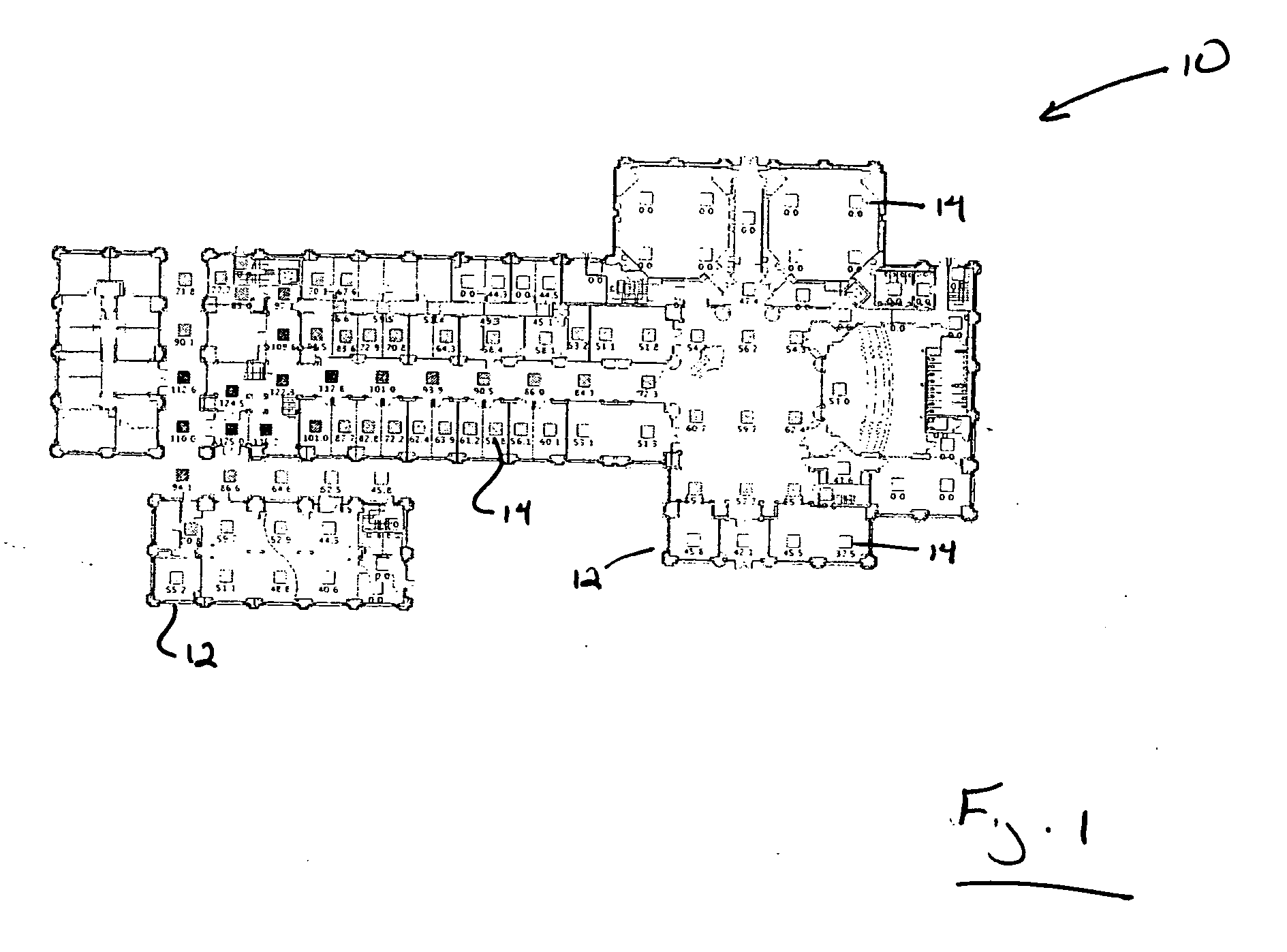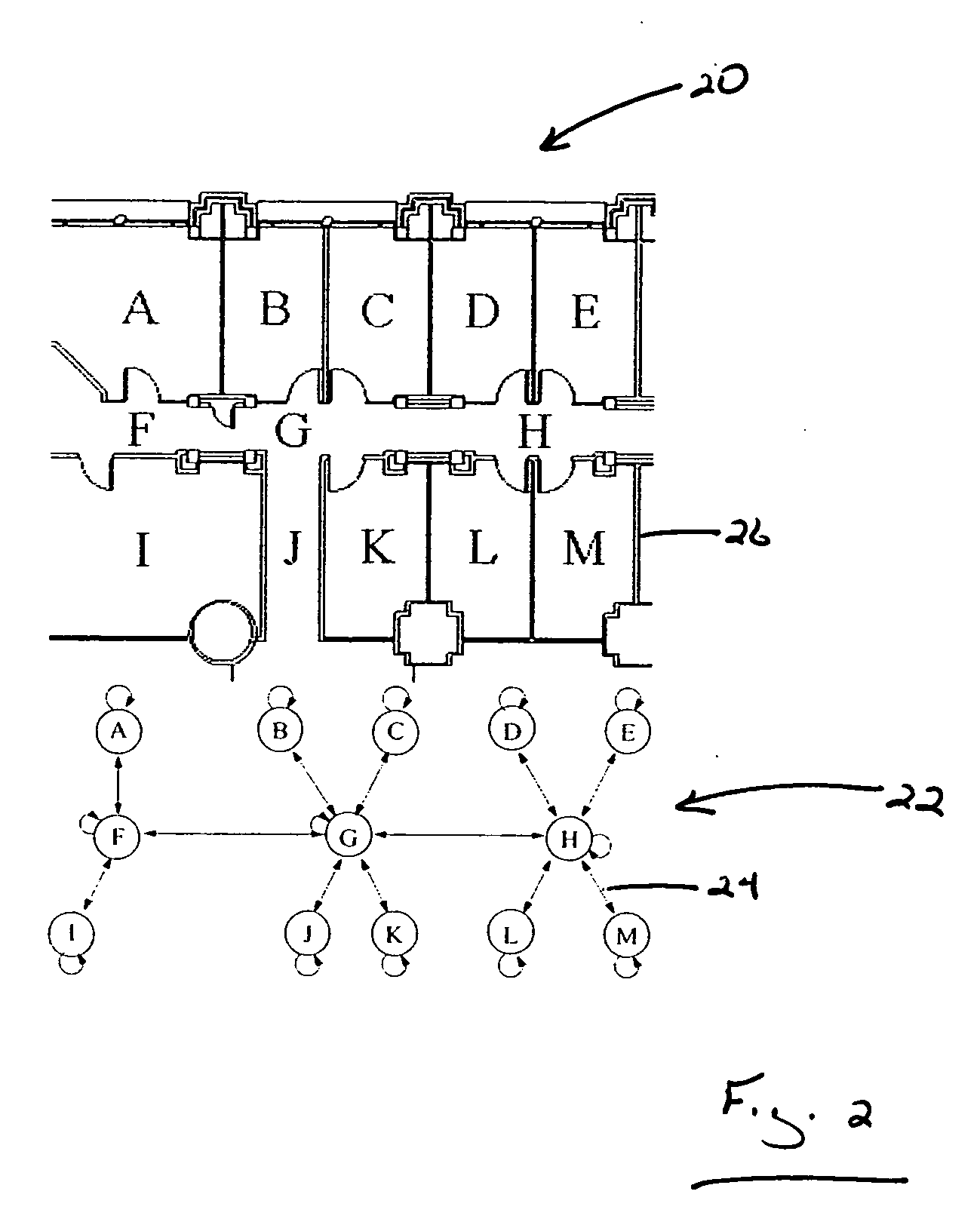System and method for localization over a wireless network
a wireless network and wireless network technology, applied in the field of computer systems and localization techniques, to achieve the effect of reducing the time necessary, and ensuring the accuracy of data samples
- Summary
- Abstract
- Description
- Claims
- Application Information
AI Technical Summary
Benefits of technology
Problems solved by technology
Method used
Image
Examples
Embodiment Construction
[0013] The disclosed invention involves the creation of a topological map for localization. The disclosed invention involves the determination of a location of a device from the measured signal strength of various base stations in a given building or region. A topological map models the environment as a graph, with each node representing a region (such as a particular room or corridor), and each edge representing regions that are connected in space. The invention is described herein with respect to a localization framework and is described with respect to deployment results in an office building or in a defined outdoor area. The disclosed localization system use Markov localization and involves the collection of signal intensity measurements for whole offices and hallways, treating the entire office or hallway as a single position. The distribution of signal intensities for each base station is then fit to a normal distribution. The localization technique that is described herein ma...
PUM
 Login to View More
Login to View More Abstract
Description
Claims
Application Information
 Login to View More
Login to View More - R&D
- Intellectual Property
- Life Sciences
- Materials
- Tech Scout
- Unparalleled Data Quality
- Higher Quality Content
- 60% Fewer Hallucinations
Browse by: Latest US Patents, China's latest patents, Technical Efficacy Thesaurus, Application Domain, Technology Topic, Popular Technical Reports.
© 2025 PatSnap. All rights reserved.Legal|Privacy policy|Modern Slavery Act Transparency Statement|Sitemap|About US| Contact US: help@patsnap.com



